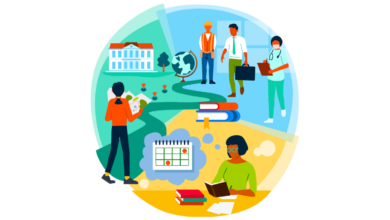The Significance of Inclusive Education for Students with Disabilities
Inclusive education is the process of educating students with disabilities in general education classrooms with their peers without disabilities. The concept is grounded in the idea that every student deserves access to the same educational opportunities and that all students can learn and thrive when given the necessary support and accommodations. In this article, we will explore the significance of inclusive education for students with disabilities, including its benefits and challenges, the role of educators and parents, and best practices for implementing inclusive education programs.
Benefits of Inclusive Education
Inclusive education offers a number of benefits for students with disabilities, including:
Improved Academic Achievement
Studies have shown that students with disabilities who receive education in inclusive settings tend to perform better academically than those in separate special education classrooms. Inclusive education allows students to access the same curriculum and instruction as their peers without disabilities, which can lead to higher academic achievement.
Enhanced Social Skills
Inclusive education provides students with disabilities the opportunity to interact and socialize with their peers without disabilities, which can help improve their social skills and self-esteem. This can also help break down stereotypes and reduce stigma surrounding disabilities.
Increased Independence
Inclusive education encourages students with disabilities to become more independent and self-reliant. It provides them with the necessary skills and support to participate fully in their education and the community, which can lead to greater independence and self-determination.
Challenges of Inclusive Education
While inclusive education offers many benefits, there are also challenges associated with implementing and sustaining inclusive education programs. Some of these challenges include:
Lack of Resources
Inclusive education requires significant resources, including personnel, training, and materials. Schools may not have the necessary resources to fully support inclusive education programs, which can make it difficult to implement and sustain.
Attitudinal Barriers
Attitudinal barriers, such as stigma and negative attitudes towards disabilities, can create obstacles to inclusive education. Educators, parents, and students may hold negative beliefs about disabilities, which can make it difficult to create a supportive and inclusive learning environment.
Lack of Preparation
Educators may not feel prepared to teach students with disabilities in inclusive settings. They may lack the necessary training and support to effectively meet the diverse needs of all students in their classroom.
The Role of Educators and Parents
Educators and parents play a critical role in promoting and supporting inclusive education. Educators should receive training and support to effectively teach students with disabilities in inclusive settings. They should also be encouraged to collaborate and share knowledge and resources to ensure that all students receive the support they need to succeed.
Parents should also be involved in the inclusive education process. They should work closely with educators to develop individualized education plans (IEPs) and provide input and feedback on their child’s progress. They should also advocate for their child’s needs and ensure that they receive the necessary accommodations and support.
Best Practices for Inclusive Education
Effective inclusive education programs require careful planning and implementation. Some best practices for inclusive education include:
Collaboration
Inclusive education requires collaboration between educators, parents, and students. Collaboration helps ensure that all students receive the necessary support and accommodations to succeed in their education.
Individualized Education Plans (IEPs)
IEPs are critical for ensuring that students with disabilities receive the necessary accommodations and support to succeed in their education. IEPs should be developed collaboratively between educators, parents, and students and should be regularly reviewed and updated to reflect the student’s progress and changing needs.
Universal Design for Learning (UDL)
UDL is an approach to teaching and learning that provides students with multiple ways of accessing and engaging with content. This can include the use of technology, hands-on activities, and other strategies that cater to diverse learning styles and abilities.




